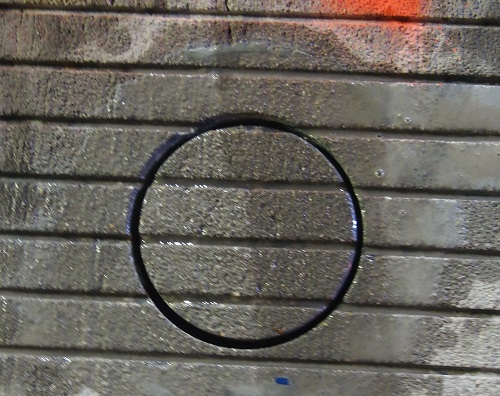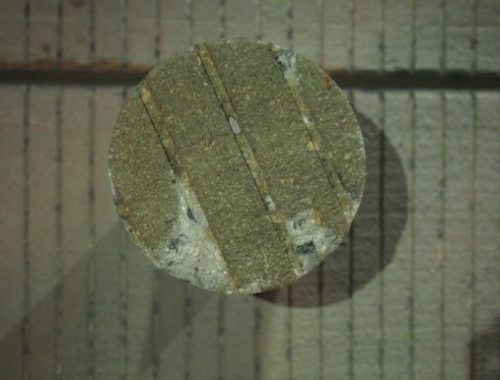We often receive concrete cores from our clients for petrography or other types of testing. When we haven’t witnessed the coring, we can’t always tell whether a core represents damaged concrete. It may be that the concrete was just fine, but the coring and extraction caused the damage—or made it worse than it was.

Whether we’re gathering evidence for a court case or just trying to solve a client’s problem, we need good, representative concrete cores.
Concrete is hard and strong, so you may not realize how easy it is to damage it. The photos on this page show the same concrete core before and after removal from the pavement. Other than some surface wear, the pavement was in fairly good shape. The concrete cores, though, were another matter.
How do you damage concrete cores? In this case, I was able to watch as the coring contractor drove a spent core barrel into the annulus between the core and the rest of the pavement, then pulled it out. You can see how the surface of the core has spalled off. If I hadn’t been there, or if nobody told me, I wouldn’t have known this surface spalling was due to rough handling. That could easily have led me to a wrong conclusion.
What could go wrong?

Some concrete is more vulnerable to damage than you’d expect. Suppose you want to know why the surface is scaling. Ideally, you’d take a core near—but not where—the scaling has already occurred. That way we can look at where it’s about to scale and see what’s causing it.
But if you’re not careful, the core drill may end up pulling off the about-to-scale surface. Worst of all, the detached surface may grind against the rest of the concrete core, obliterating all the detail we were hoping to examine.
If we suspect some chemically related deterioration, it’s important to take special precautions to keep from destroying or obscuring the evidence. We’ve discussed previously the sampling techniques you need when you’re assessing corrosion or sulfate attack.
